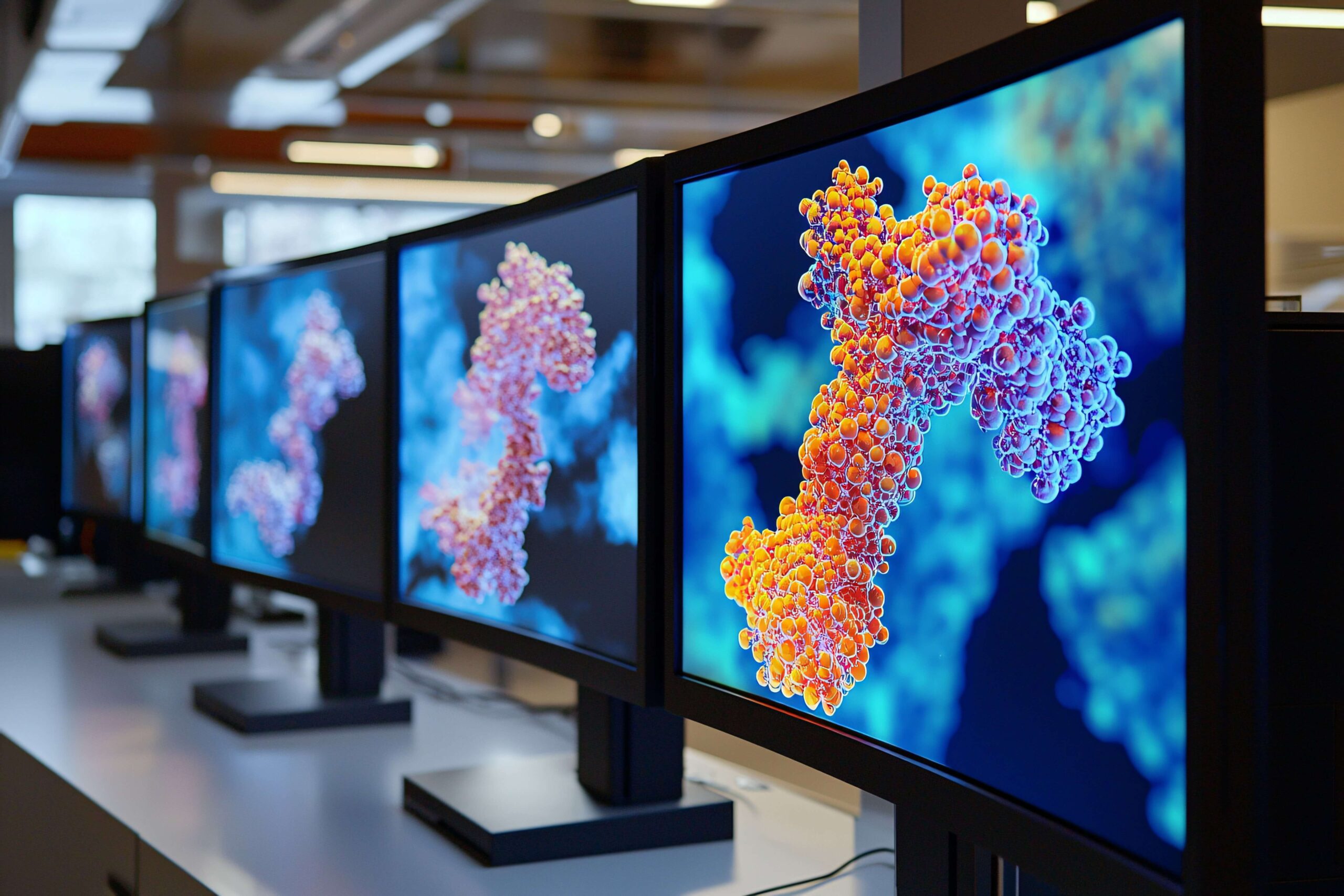Researchers from the Biomedical Sciences Research Center “Alexander Fleming” and the Centre for Misfolding Diseases at the University of Cambridge have found a way to predict the structure of a significant fraction of the proteome that was previously considered “dark” and difficult to be studied
Protein structure plays a key role in their biological function. Any alteration at any structural level, including slight changes in the folding mechanism or final folded protein shape, may render a protein non-functional.
However, this is not always the case. Some proteins exhibit chaotic and ‘disordered’ structures yet still perform essential functions. These proteins, known as intrinsically disordered proteins (IDPs), comprise approximately 30% of the human proteome and play important functional roles in transcription, translation, and signalling. Many mutations linked to neurological diseases, including amyotrophic lateral sclerosis (ALS), are located in intrinsically disordered protein regions (IDRs).
“These protein segments, known as intrinsically disordered regions (IDRs), do not attain a stable secondary or tertiary structure and rapidly change their conformation, making structure prediction particularly challenging,” explains Dr. Zacharias-Faidon Brotzakis, a senior postdoctoral researcher in the lab of Dr Georgios Skretas at the Institute for Bioinnovation of the Biomedical Sciences Research Center “Alexander Fleming” (BSRC Fleming).
Do Algorithms Always Work?
The accurate prediction of protein structures from amino acid sequences has been a long-standing challenge in biology. Powerful machine-learning algorithms, including AlphaFold and RoseTTAFold, have been trained to predict the detailed structure of natural proteins based solely on their amino acid sequences and have achieved high accuracy. However, predicting the structure of human proteins containing IDRs remains challenging.
“The highly successful AlphaFold2 algorithm does not accurately predict the three-dimensional shape of intrinsically disordered regions. This is because it has not been trained on such data and because these proteins exhibit inherent dynamic behaviour, adopting a range of conformations rather than a single stable one. As a result, AlphaFold2 cannot provide realistic representations of these ‘disordered’ and ‘chaotic’ protein regions as a whole,” explains Dr Brotzakis.
According to the Greek researcher, IDPs, like structured proteins, play an equally significant biological role, even though they contradict the central dogma of biology, which suggests that a single stable shape determines a protein’s function.
“In recent decades, there has been growing consensus among researchers about the decisive role that protein ‘disorder’ plays in function. This is evident in IDPs or in the disordered regions of structured proteins, where functionality depends precisely on their ability to explore and adopt different shapes,” adds Dr Brotzakis.
A hidden part of the Proteome
Now, a team of researchers from BSRC Fleming and the Centre for Misfolding Diseases at the University of Cambridge has found an efficient way to predict the structures of a significant fraction of all human proteins that were previously considered “dark” and notoriously difficult to observe.
The team developed and used an algorithm called AlphaFold-Metainference, which was trained on data from available protein structure databases as well as molecular dynamics simulations. The findings of the study were recently published in Nature Communications.
“AlphaFold has transformed structural biology by providing accurate predictions of protein structures. We have now shown how to extend these predictions to IDPs, which make up about a third of the human proteome and are implicated in virtually all major diseases,” says Michele Vendruscolo, Professor of Biophysics at the Centre for Misfolding Diseases at the University of Cambridge.
“We were surprised to find that although AlphaFold does not accurately predict the three-dimensional structure of IDPs, it can predict the distances between amino acids with quite good accuracy. We then incorporated this information into molecular dynamics simulations, allowing us to accurately predict the three-dimensional structures these disordered proteins adopt and their motion,” explains Dr Brotzakis, the study’s first author.
According to Dr Brotzakis, the algorithm was tested on proteins containing both disordered and non-disordered regions, including TDP-43 (associated with ALS), ataxin-3 (linked to Machado-Joseph disease), and the prion protein (implicated in Creutzfeldt-Jakob disease).
“We tested the algorithm on a total of eleven IDPs and six PDPs, but we focused particularly on proteins associated with serious diseases. In all cases, the algorithm outperformed AlphaFold in accuracy. In fact, in 80% of cases, it matched or exceeded the accuracy of molecular dynamics simulations. This demonstrates the algorithm’s advantage in the structural characterization of IDPs,” explains Dr. Brotzakis.
Future Applications
Scientists now have a faster and more accurate way to determine the structures of disordered proteins, especially in cases where experimental data are unavailable. “In the future, we can use this information to discover molecules of pharmaceutical interest that can interact strongly with these proteins and modify their dynamics. This could prevent their problematic folding into toxic forms, such as amyloid fibrils, which are observed in many neurodegenerative diseases,” says Dr Brotzakis.
According to him, the characterization of the range of conformations adopted by disordered proteins is a growing field. “What our research offers is the combination of speed and accuracy. Next steps are to apply the algorithm to other biomolecules, such as DNA and RNA,” concludes Dr Brotzakis.
For more information about the publication in the Greek press, please visit the related articles published by the Athens – Macedonian News Agency and Dnews.

